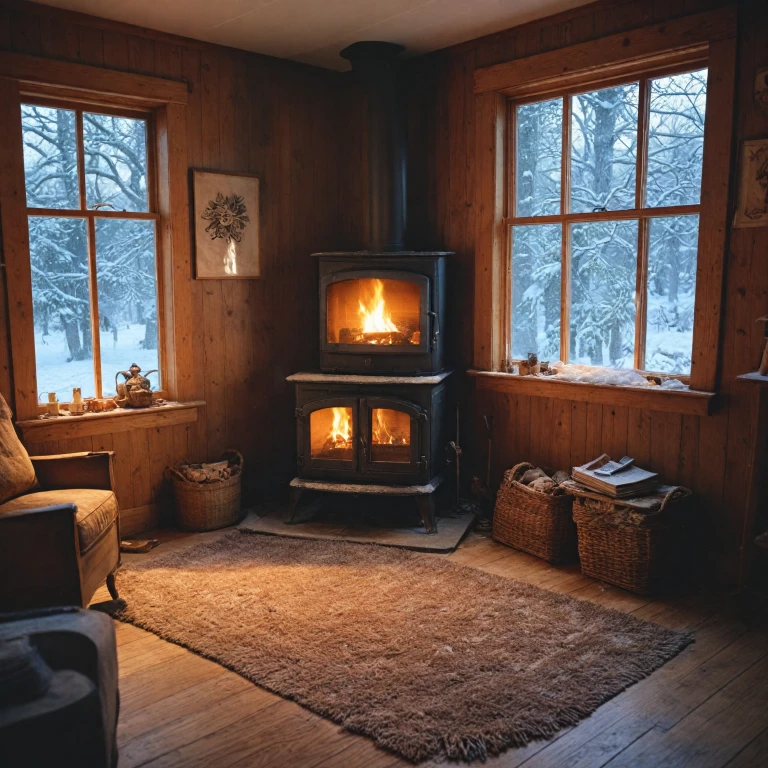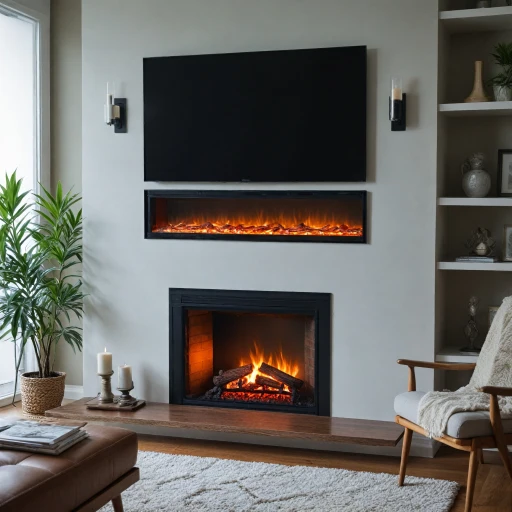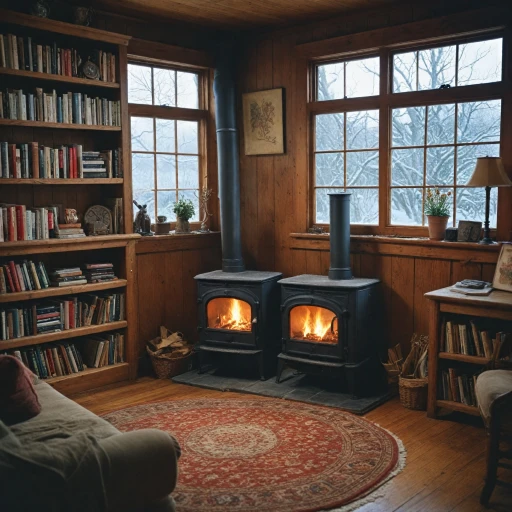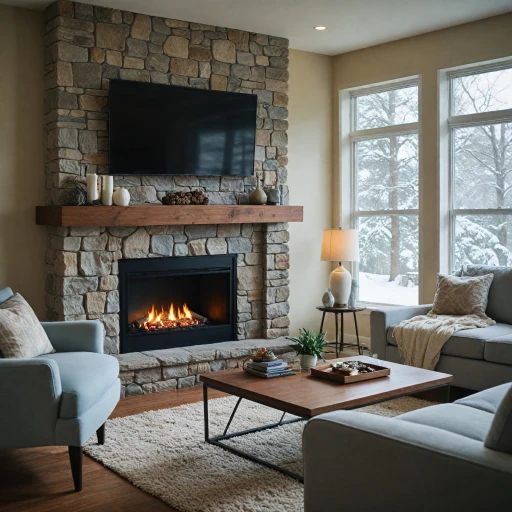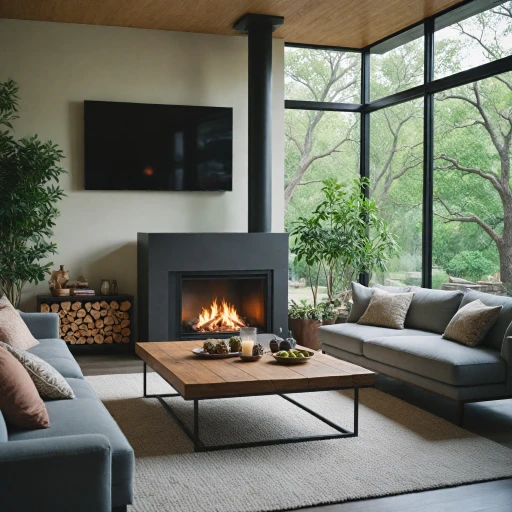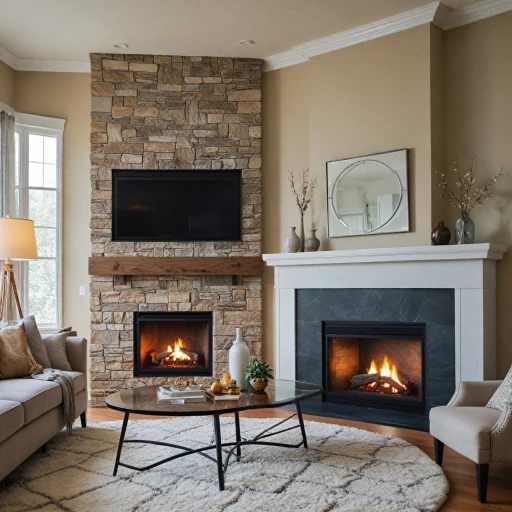
Understanding the Role of a Wood Stove Blower Fan
How a Blower Enhances Heat Distribution
When it comes to heating your room efficiently, a wood stove blower fan plays a crucial role. By boosting your stove's heat output, the fan distributes warm air evenly across the space, reducing cold spots and enhancing comfort. Heating with just a stove can sometimes lead to uneven warmth – it feels cozy right next to the stove but chills persist across the room. Here's where the magic of a blower comes into play. It works by circulating air around the stove and pushing it out at a higher speed than natural convection allows. A blower fan, which might be part of a blower kit, consists of a fan motor and centrifugal blower. This combo draws cooler air in from the room, heats it using the stove's warmth, and sends it back out as warmer air. This process not only optimizes heat distribution but can also help in energy savings by requiring less stoking of the fire to maintain a steady temperature. The design of a blower, whether it's integrated into a stove or available as a fan kit for aftermarket installation, significantly influences its efficiency. High-quality blower motors, like those found in an infinity airblaze or magic heat systems, ensure effective circulation of air without excessive noise. Understanding this mechanism helps in appreciating the benefits of these fans, whether they are part of your existing stoves or new additions to your heating setup. Choosing the right blower fan or kit to match your needs and installing it correctly can transform your heating experience, as you might see in other sections dealing with selection and setup advice.Benefits of Using a Wood Stove Blower Fan
Boosting Comfort and Efficiency in Your Home
Adding a wood stove blower fan to your heating setup brings a host of advantages that can make your home warmer and your stove more efficient. While it's easy to enjoy the cozy glow of a fireplace, having a blower can truly transform how heat is distributed across your living space.
One of the standout benefits is the enhanced heat output. By circulating warm air more effectively, a wood stove blower fan ensures even warmth throughout the room. Instead of heat just rising directly above the stove, the fan aids in spreading that heat across every nook and cranny, providing uniform comfort.
Energy efficiency is another key perk. With a blower fan, you might find yourself using less fuel over time, whether it's wood, pellets, or any other source your stove relies on. This not only helps you save money but also reduces your environmental footprint—a win-win! The speed controller on many blowers allows you to adjust the fan speed according to your heating needs, which can help maintain optimal efficiency.
Beyond just warmth, there’s the benefit of increasing the life of your stove. The heat reclaimer function of a blower helps lower the temperature within your stove by exhausting hot air efficiently, reducing wear and tear on the stove parts. This means less frequent needs for replacement parts and repairs.
Ultimately, adding a wood stove blower fan into your hearth experience doesn't just amplify warmth—it boosts the overall functionality and lifespan of your stove. So if you're someone looking to get the most out of that cozy corner in your home, considering a magic heat blower or centrifugal blower could be well worth the msrp or price you pay, whether sourced from Amazon or a local supplier.
Choosing the Right Wood Stove Blower Fan for Your Needs
Finding the Perfect Fit
So, you're thinking about getting a wood stove blower fan to beef up the warmth in your room. Great choice! Picking the right blower doesn't have to be tricky. Here’s what you need to consider:
- Type of Stove: Determine if your wood stove or pellet stove is compatible with the blower fan. Check for built-in provisions or recommended kits in the manufacturer’s specs. A convection blower or a heat reclaimer might be just what you need for stoves.
- Room Size: Bigger rooms require blowers with higher air flow and heat output. Something like the Magic Heat could boost efficiency by pushing heated air where it's needed most.
- Speed and Control: Want versatility? Go for a blower with a speed controller. It lets you tailor the heat output without breaking the bank.
- Price Point: Stick to your budget by comparing msrp on platforms like Amazon. Do you need the top-of-the-line Infinity Airblaze, or will a budget-friendly option suffice?
- Ease of Installation: Look for a blower kit that offers straightforward installation, complete with a fan motor and clamps. Some even come with a handy step-by-step guide.
- Replacement Parts: Consider the availability of replacement parts like blower motors and centrifugal blower units, especially if you're investing for the long haul.
Matching the right fan to your wood stove setup isn't just about maximizing heat. It's about making sure your fireplace or stove is running smoothly and efficiently. Curious about how these all come together to maximize warmth? Check out how wood stoves use blowers for a deeper dive into the mechanics.
Installation Tips for a Wood Stove Blower Fan
Setting the Foundation for a Perfect Installation
Getting your wood stove blower fan up and running doesn't have to feel like piecing together a puzzle. With the right steps, your fireplace will emit a more even heat, fitting for cozy evenings. Here's the breakdown to get you started:- Gather Your Tools and Materials: Comprehensive preparation is crucial. Check if your blower fan kit includes everything, from mounting brackets to the fan motor. Don't skip reading the manufacturer's manual as it’s your go-to guide. Common items you might need include a screwdriver, wrench, and possibly a gasket or sealant for various stoves.
- Safety First: Never compromise safety. Ensure the stove is turned off and completely cool. It’s wise to disconnect any power sources to avoid electric shocks. Remember, checking local regulations and obtaining required permits might be a good idea.
- Position the Blower Right: Most blowers are placed at the back of the stove or underneath, pulling in cooler room air and pushing it out as warm air. Ensure it's well positioned to utilize the magic heat principle without obstructions.
- Attach the Blower Kit: Affix the blower kit securely using the provided mounting hardware. Make sure all connections are tight. Loose connections can affect performance and create noise issues down the line.
- Testing the Waters: Once installed, plug the fan into the stove's power source—some models even work heat powered. Test the blower fan operation. Keep your ears open for unusual noises; a smooth sound signifies a job well done.
- Finalize with Adjustments: Some units come with a speed controller to adjust the airflow. Finding the right setting will improve your stove's heat output significantly, providing comfort throughout the room.
Maintenance and Troubleshooting for Blower Fans
Keeping Your Blower Running Smoothly
Maintaining your wood stove blower fan is crucial to ensure it operates efficiently. Here’s a look at some maintenance tips and common troubleshooting methods to keep your blower in top shape:- Regular Cleaning: Dust and debris can accumulate on the blower motor and blades, affecting performance. Remove the blower when the stove is cool, and gently clean the components with a soft brush or compressed air.
- Visual Inspection: Regularly check for wear and tear, such as cracks in the fan blades or worn-out belts in belt-driven models. Addressing these early can prolong the blower's life.
- Lubrication: Some blower fans require periodic lubrication. Check your model's manual for guidance, and use the recommended type of oil or grease to ensure smooth operation.
- Tighten Loose Connections: Vibrations from the stove can loosen screws and connections over time. Be sure to tighten any loose parts to prevent rattling noises and maintain the blower's effectiveness.
- Troubleshooting Power Issues: If the blower isn't running, ensure the power source is working and check the fuse. If the issue persists, it may require a replacement blower motor.
Comparing Blower Fans: What to Look For
Finding the Right Fit: Considerations When Comparing Blower Fans
When choosing a stove blower fan, it's not just about getting the first one off the shelf. There are several aspects to mull over to ensure you get the right fit for your wood stove or fireplace.
- Airflow Capacity: The efficacy of a blower fan largely depends on its airflow capacity. This influences how well it can distribute the heat across the room. For larger spaces or to optimize heat output from your stove heating efforts, you might want to consider a higher-powered blower motor.
- Heat Reclaimer Type: Fans like the Magic Heat can reclaim excess heat from the chimney, pushing warm air into your living space rather than letting it escape. This process is especially beneficial if you're using a wood or pellet stove.
- MSRP and Price: Keep an eye on the price tags. High-end brands often offer more durable motors and advanced speed controllers, but you might also find cost-effective options that perform just as well without breaking the bank. Checking online marketplaces like Amazon can give you a wide range of choices and price points.
- Compatibility with Your Stove: Every fan is not a one-size-fits-all. Ensure the blower fan or blower kit fits your specific wood stoves, fireplaces, or pellet stoves. Consulting the kit or stove’s manual can offer some guidance.
- Noise Levels: A loud fan can quickly turn from a cozy evening by the hearth into an unpleasant experience. Prioritize a quiet fan kit that offers the right balance between sound and function.
- Installation Ease: Look into whether the fan requires professional installation or if it's a plug-and-play option, which can save you time as you explore different heaters on the market.
Whether you're using it as a replacement dayton or investing in a new centrifugal blower, circling back to how these components integrate with your stove and home environment can make all the difference in your heating experience. For more ways to boost your winter warmth, check our detailed guide on proper maintenance and handling potential troubleshooting issues.
